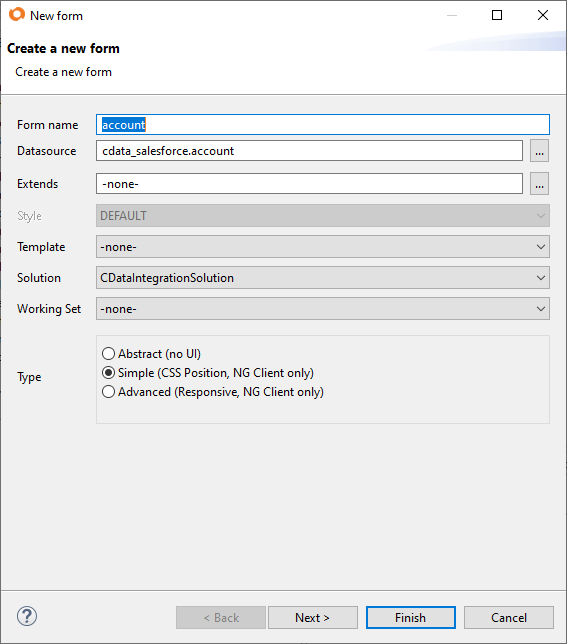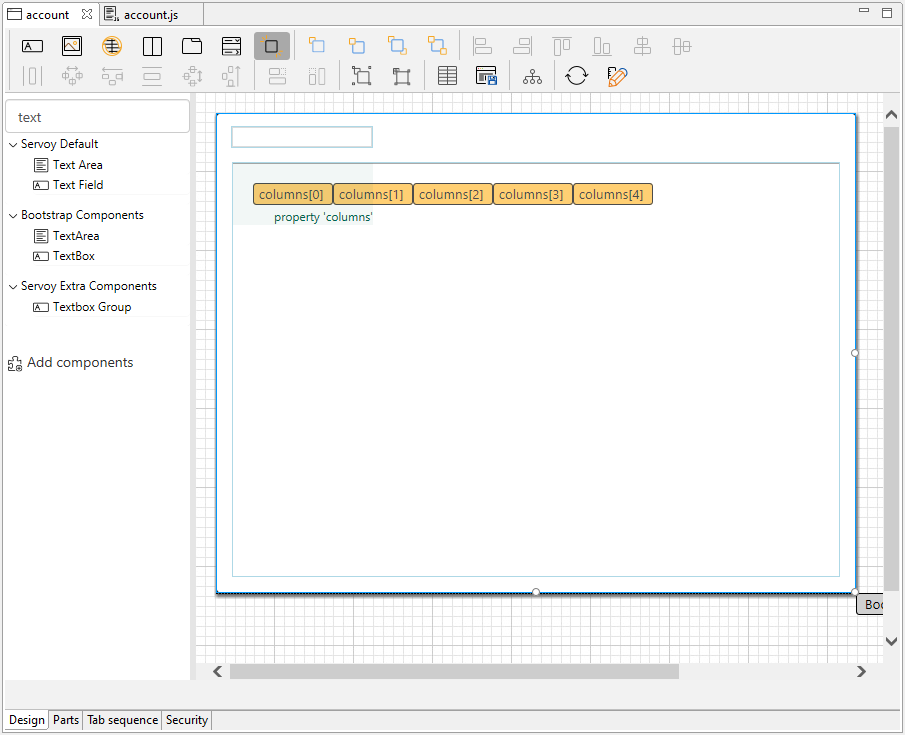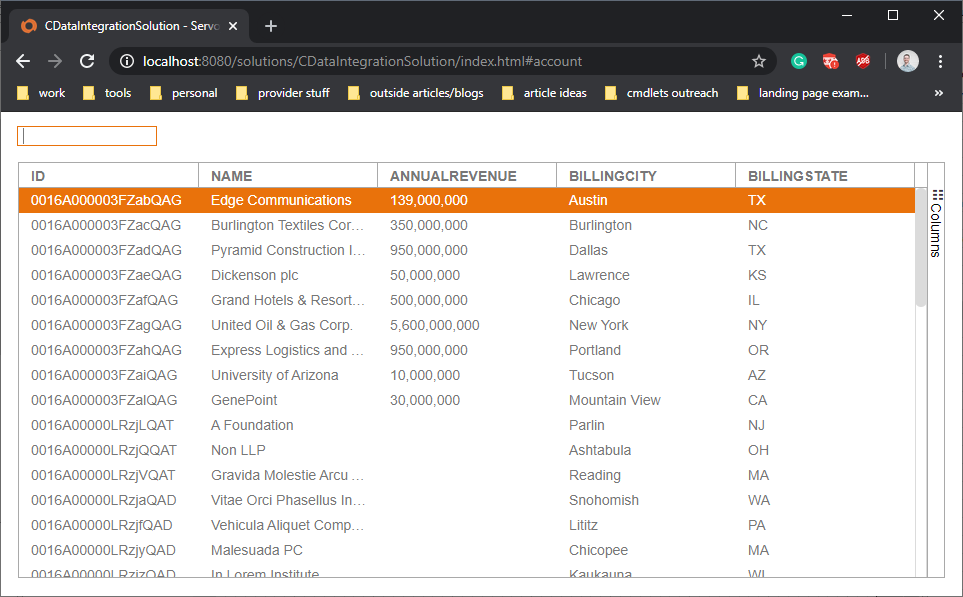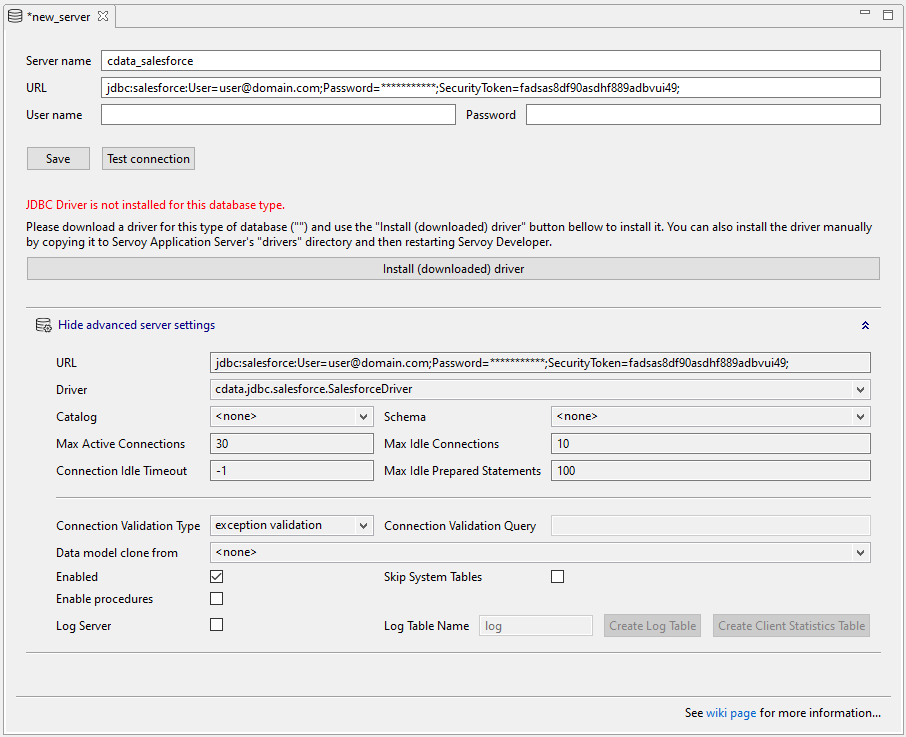Discover how a bimodal integration strategy can address the major data management challenges facing your organization today.
Get the Report →Build REST-Connected Web Apps in Servoy
Use Servoy Developer to easily connect to REST data and build web apps with connectivity to live REST data.
Servoy is a rapid application development and deployment platform. When paired with the CData JDBC Driver for REST, users can build REST-connected apps that work with live REST data. This article describes how to connect to REST from Servoy and build a simple web app to display and search REST data.
With built-in optimized data processing, the CData JDBC Driver offers unmatched performance for interacting with live REST data. When you issue complex SQL queries to REST, the driver pushes supported SQL operations, like filters and aggregations, directly to REST and utilizes the embedded SQL engine to process unsupported operations client-side (often SQL functions and JOIN operations). Its built-in dynamic metadata querying lets you work with REST data using native data types.
Connect to REST in Servoy Developer
To build REST-connected apps, you need to first create a data provider in Servoy Developer using the CData JDBC Driver for REST.
- Install the JDBC Driver.
- Copy the JDBC Driver JAR file. (cdata.jdbc.rest.jar) to the /application_server/drivers/ directory in the installation directory for Servoy.
- Open Servoy Developer.
- In the Solution Explorer, right-click Database Server (under Resources) and choose "Connect to existing database" -> "empty."
- Name the server.
- Click to show the advanced server settings.
Set the URL, for example: jdbc:rest:DataModel=Relational;URI=C:/people.xml;Format=XML;
Built-In Connection String Designer
For assistance in constructing the JDBC URL, use the connection string designer built into the REST JDBC Driver. Either double-click the JAR file or execute the jar file from the command-line.
java -jar cdata.jdbc.rest.jarFill in the connection properties and copy the connection string to the clipboard.
See the Getting Started chapter in the data provider documentation to authenticate to your data source: The data provider models REST APIs as bidirectional database tables and XML/JSON files as read-only views (local files, files stored on popular cloud services, and FTP servers). The major authentication schemes are supported, including HTTP Basic, Digest, NTLM, OAuth, and FTP. See the Getting Started chapter in the data provider documentation for authentication guides.
After setting the URI and providing any authentication values, set Format to "XML" or "JSON" and set DataModel to more closely match the data representation to the structure of your data.
The DataModel property is the controlling property over how your data is represented into tables and toggles the following basic configurations.
- Document (default): Model a top-level, document view of your REST data. The data provider returns nested elements as aggregates of data.
- FlattenedDocuments: Implicitly join nested documents and their parents into a single table.
- Relational: Return individual, related tables from hierarchical data. The tables contain a primary key and a foreign key that links to the parent document.
See the Modeling REST Data chapter for more information on configuring the relational representation. You will also find the sample data used in the following examples. The data includes entries for people, the cars they own, and various maintenance services performed on those cars.
![Using the built-in connection string designer to generate a JDBC URL (Salesforce is shown.)]()
- Select the Driver class you just copied, for example, cdata.jdbc.rest.RESTDriver
![Connecting to data through the JDBC Driver (Salesforce is shown).]()
Build a REST-Connected Web App
Once you have configured the connection to REST in the Servoy Developer resources, you are ready to build apps with access to live REST data.
Create a New Solution
- In the Server Explorer, right-click "All solutions" and select "Create new solution."
- Name the solution.
- Select the checkbox to include the "search" module.
- Click "Finish."
Create a New Form
Right-click "Forms" and select "Create new form."
- Name the form.
- Select a Datasource.
- Set the type (e.g., Simple) and click "Finish."

Add a Data Grid to the Form
- Drag a Data Grid component (from Servoy NG-Grids) onto the form.
Drag a column component onto the Data Grid and set the "dataprovider" property for each column component to a column from the REST "table" (e.g., [ personal.name.first ] from the people table).
Continue adding columns as desired.
Add Searching to the App
Note that the "svySearch" extension is required to add search functionality (included by default when you create a new solution). If you did not add the extension when you created the solution or you are modifying an existing solution, you can add the search module by right-clicking Modules (in the solution) and selecting "Add Module." Select "svySearch" and click "OK."
- Drag a Text Field component onto the Form.
- Right-click the Form and select "Open in Script Editor."
- Create a new variable (JavaScript) to hold the search value:
var searchText = '';
- Back on the Form, in the Text Field properties:
- Set the "dataprovider" property to the Form variable you just created.
- Double-click to add a method for the onAction event.
- Click to create the method in "Form," name the method (e.g., onEnter), and click "Create private."
- Click "OK & Show."
- Add the following JavaScript to the JavaScript file to use the Servoy framework to implement searching bound data based on the text in the Text Field:
var search = scopes.svySearch.createSimpleSearch(foundset).setSearchText(searchText); search.setSearchAllColumns(); search.loadRecords(foundset);

Save and Launch the App
Save the form and JavaScript file, then click Run -> Launch NGClient to start the web app.

Download a free, 30-day trial of the CData JDBC Driver for REST and start building REST-connected apps with Servoy. Reach out to our Support Team if you have any questions.








